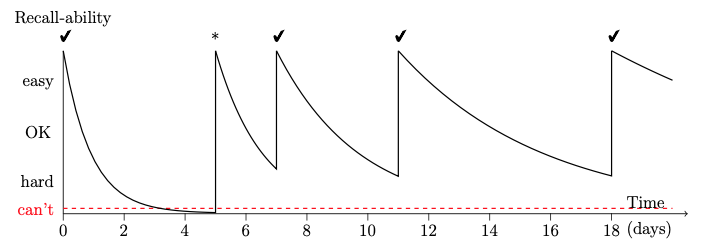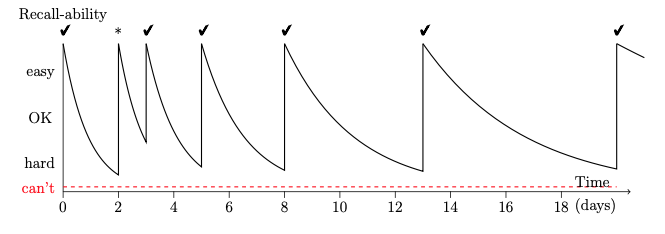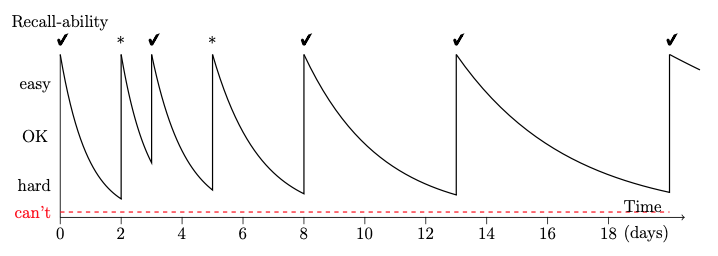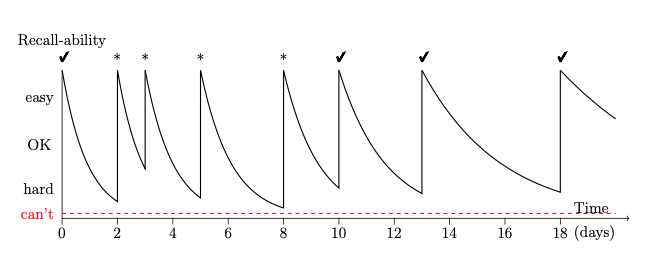| Info |
|---|
This teacher training course is made of 5 topics, this topic: retrieval practice theory, is made of 3 layers and is suitable for both teachers and managers within a school. The teacher may read about each layer here and if desired or required can use the timely practice app to embed the course into their long-term memory. |
...
If we learn something and don’t use it, we will forget it.
we typically, We - over a century later - often think of this in graph form.
Learners retain the learning of a lesson, for very different durations.
...
Looking at the forgetting curves in the graph above - we suggest that learners who forget:
within 2 days, within 3 days and within a week are ideal for timely practice - we call these learners “our cohort”, as they most benefit from timely practice,
between 1 and 4 weeks although these learners will benefit from timely practice, they may gain almost as much from whole class retrieval practice,
over 4 weeks - these are typically high attaining learners, who homework and end-of-unit tests etc works well for - although it has to be said that most “top sets” in year 7 and 8 will contain a few learners who will benefit from timely practice and without a retrieval practice program may well be in middle or even lower middle sets by year 10 and 11.
...
Each question is from the layer, and we assume that success on any question indicates some level of mastery on all similar questions within the layer.
In effect with With successful retrieval practice we are improving the recall of the faster forgetter (e.g forgets within 2 days), with a few retrieval practice questions (in this graph e.g. 5 retrieval practice questions) until they can remember for over 4 weeks ( as the best rememberers do ). (e.g. for over 4 weeks)
...
Over time, the fastest forgetter with retrieval practice can remember for longer than the best rememberer without retrieval practice. After a few more retrieval practice questions the interval (the wait between one practice and the next) will become several years. Often layers no longer need to be practised, because harder layers cover the same learning.
...
The app doesn’t need to know the reason why the learner couldn’t independently and accurately answer the question - but the teacher may like to bear in mind possible reasons covered in - see chunk-based theory - as they give feedback.
Here are some graphs, to show how the timely practice app adjusts the interval between practices as a response to tick and feedback
correct - shown by a ✔︎ and
feedback - shown by a * assessment outcomes:
Feedback only required because of poorly spaced lessons or learner absence | Minimal feedback requirement |
Common feedback requirement | The teacher is very persistent with feedback - on this occasion it pays off. |
...
Since most secondary classes don’t have maths lessons 7 days a week, the app can only do its best. When a layer is asked very late, sometimes feedback is the answerrequired, sometimes revising or reteaching is the answerrequired. The pitfalls to avoid are:
...
Sometimes we may be able to predict that most learners won’t be able to recall learning e.g. from the last maths lesson before a half term holiday, to the first maths lesson after the holiday. The teacher may prefer to
do project based learning on in the last maths lesson before the half term holiday (along with a retrieval practice assignment),
only add the learning (of the last maths lesson before the holiday) “as taught” after revising or reteaching on the first maths lesson after the holiday.
Rest assured, even the most low attaining learners e.g. year 8 students who can’t work out 43 + 10, manage to learn with imperfect lesson spacing.
However the lowest attaining learners can also benefit from extra short practice assignments within the week and/or for homework if family support is available, to help fill the gaps created by poorly spaced lessons.
...



